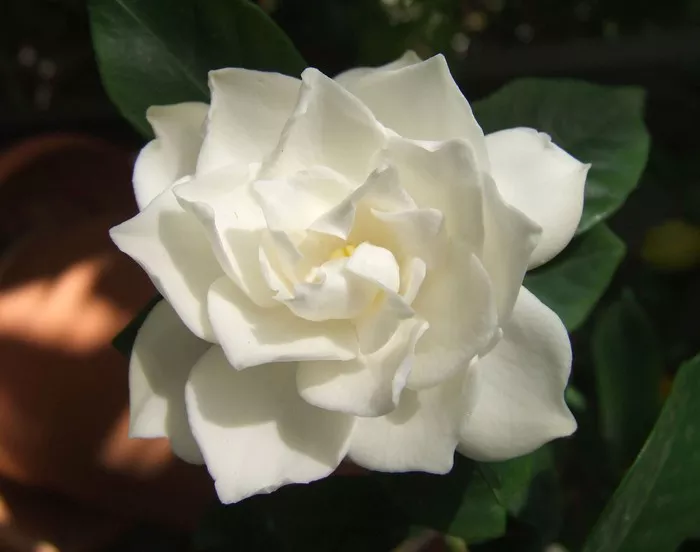In the vibrant tapestry of nature, flowers stand out as colorful expressions of beauty and meaning. Beyond their aesthetic appeal, flowers hold deep symbolic significance, often conveying emotions, sentiments, and messages through their hues and forms. One of the most universally recognized symbols associated with flowers is peace. Throughout history and across cultures, certain colors of flowers have been closely associated with the concept of peace, offering subtle yet powerful expressions of tranquility, harmony, and reconciliation.
The Language of Flowers: An Ancient Tradition
The practice of assigning meanings to flowers, known as floriography or the language of flowers, has roots that stretch back centuries. In various civilizations, including ancient Egypt, Greece, and Rome, flowers were used to convey messages, sentiments, and intentions. However, it was during the Victorian era that floriography reached its peak, with intricate flower arrangements serving as a form of coded communication, allowing individuals to express feelings that could not be spoken aloud in polite society.
Peace: A Universal Aspiration
Peace is a fundamental human desire, sought after across generations and cultures. It encompasses not only the absence of conflict but also a sense of harmony, unity, and well-being. From personal relationships to global diplomacy, the pursuit of peace shapes our interactions and aspirations. In this context, the symbolism of peace in flowers holds profound significance, offering a visual representation of our collective yearning for tranquility and reconciliation.
The Colors of Peace: Exploring Symbolism
While flowers come in a myriad of colors, certain hues have become closely associated with the concept of peace. Each color carries its own unique symbolism, contributing to the rich tapestry of meanings associated with flowers. Let us delve into the significance of some of the most prominent colors of peace in the language of flowers:
1. White: The Epitome of Peace
White is perhaps the most iconic color associated with peace. Revered for its purity, simplicity, and clarity, white flowers evoke a sense of serenity and transcendence. In many cultures, white is also symbolically linked to innocence, spirituality, and renewal. White flowers such as the white lily, white rose, and white lotus have long been used in religious ceremonies, representing the divine presence and the quest for enlightenment. In the language of flowers, a bouquet of white blooms conveys a message of peace, purity, and hope for a better tomorrow.
2. Blue: Calm Waters of Tranquility
Blue, with its tranquil and soothing presence, is another color closely associated with peace. Inspired by the vast expanse of the sky and the calming depths of the ocean, blue flowers evoke a sense of calmness, stability, and introspection. In many cultures, blue is also linked to wisdom, truth, and clarity of thought. Flowers such as the blue hydrangea, blue delphinium, and blue forget-me-not are often used to convey a message of peace, harmony, and inner serenity. A bouquet of blue blooms serves as a gentle reminder to seek solace amidst life’s turbulent waters.
3. Green: Renewal and Growth
Green, the color of nature and vitality, symbolizes renewal, growth, and harmony with the natural world. Associated with springtime and new beginnings, green flowers represent the cyclical nature of life and the promise of regeneration. In many cultures, green is also linked to balance, prosperity, and abundance. Flowers such as the green chrysanthemum, green orchid, and green carnation are often used to convey a message of peace, healing, and rejuvenation. A bouquet of green blooms serves as a reminder to embrace change and embrace the opportunities for growth and renewal.
4. Purple: Majesty and Spirituality
Purple, with its rich and regal hues, carries connotations of majesty, spirituality, and introspection. Associated with royalty and divine wisdom, purple flowers evoke a sense of reverence and awe. In many cultures, purple is also linked to mysticism, creativity, and transformation. Flowers such as the purple iris, purple orchid, and purple lavender are often used to convey a message of peace, dignity, and spiritual enlightenment. A bouquet of purple blooms serves as a reminder to honor the sacredness of life and embrace the journey towards inner harmony and fulfillment.
5. Yellow: Radiant Optimism
Yellow, with its cheerful and uplifting presence, symbolizes joy, optimism, and positivity. Associated with the warmth of the sun and the brightness of summer, yellow flowers evoke a sense of happiness and vitality. In many cultures, yellow is also linked to friendship, laughter, and enlightenment. Flowers such as the yellow daisy, yellow tulip, and yellow sunflower are often used to convey a message of peace, friendship, and optimism for the future. A bouquet of yellow blooms serves as a ray of sunshine, reminding us to embrace each day with hope and enthusiasm.
6. Pink: Gentle Compassion
Pink, with its soft and delicate hues, embodies qualities of love, compassion, and tenderness. Associated with affection and nurturing, pink flowers evoke a sense of comfort and emotional warmth. In many cultures, pink is also linked to femininity, grace, and sensitivity. Flowers such as the pink rose, pink peony, and pink cherry blossom are often used to convey a message of peace, love, and empathy. A bouquet of pink blooms serves as a gesture of kindness, offering solace and support in times of need.
Conclusion
In the intricate language of flowers, the colors associated with peace offer a poignant reminder of our shared humanity and aspirations for harmony. Whether given as gifts, used in ceremonies, or admired in gardens, flowers have the power to transcend language and cultural barriers, speaking to the universal longing for peace and understanding. As we navigate the complexities of our world, let us draw inspiration from the symbolism of flowers, cultivating peace in our hearts and communities one bloom at a time.


